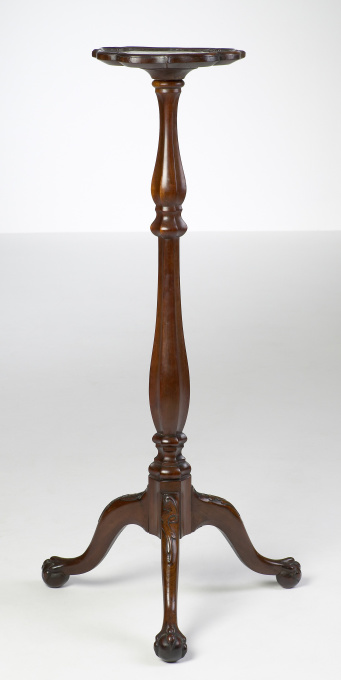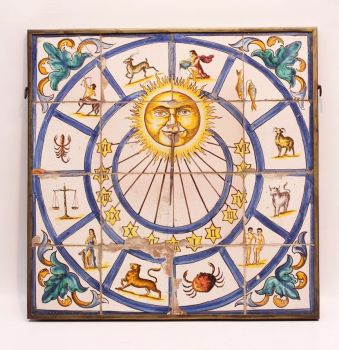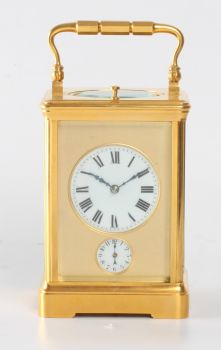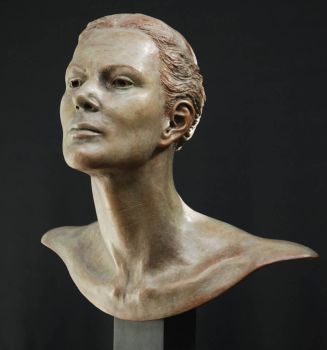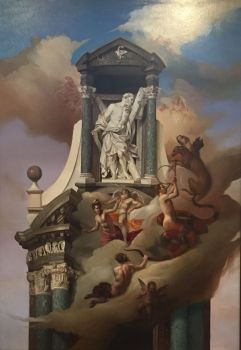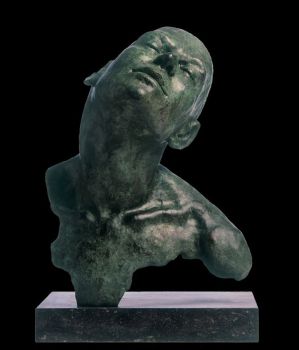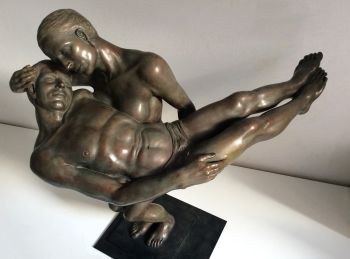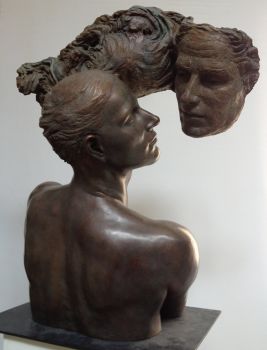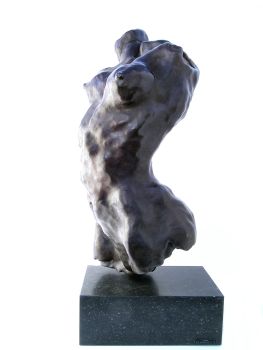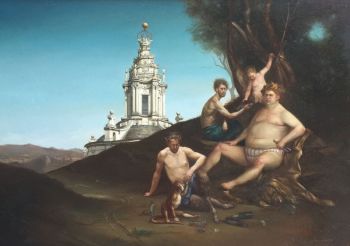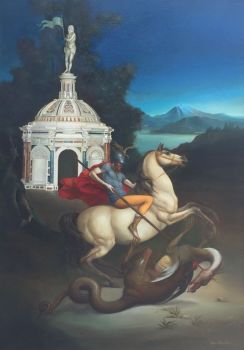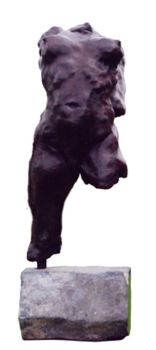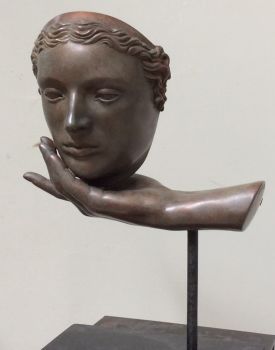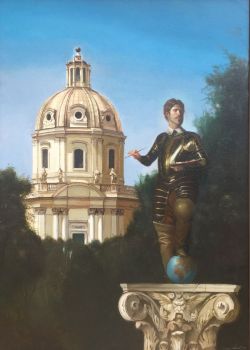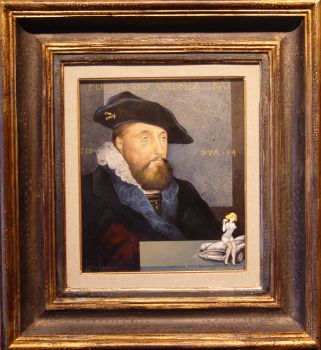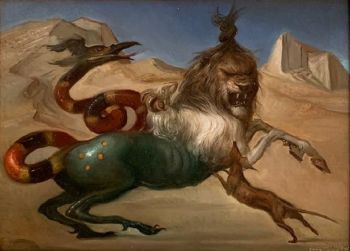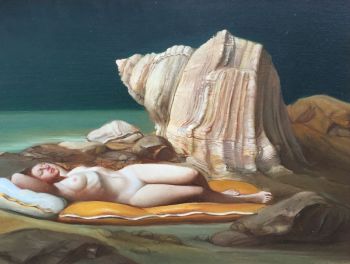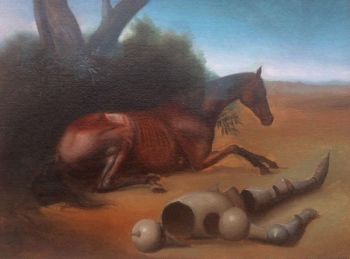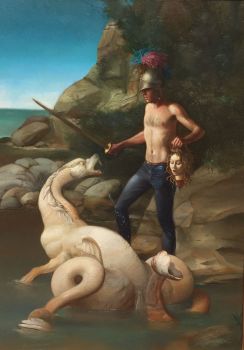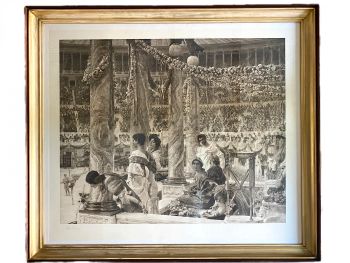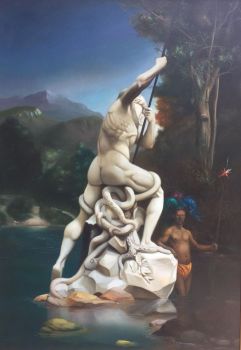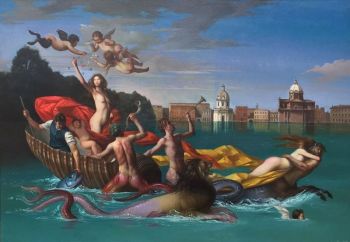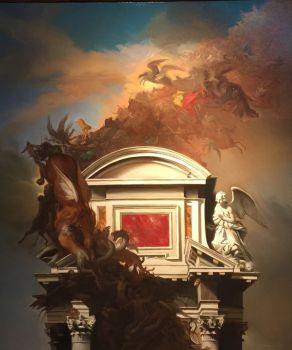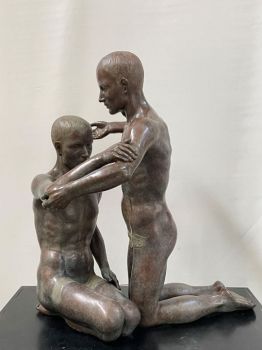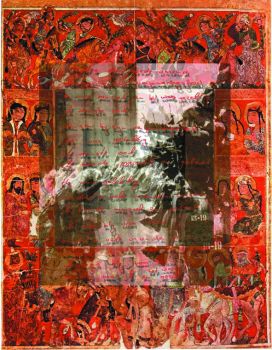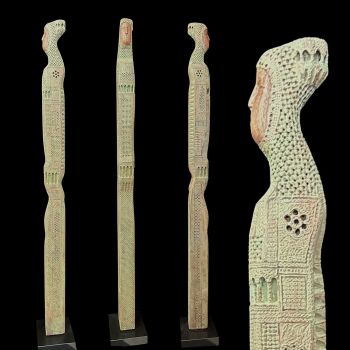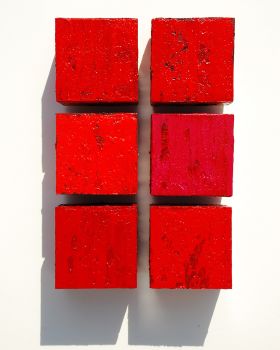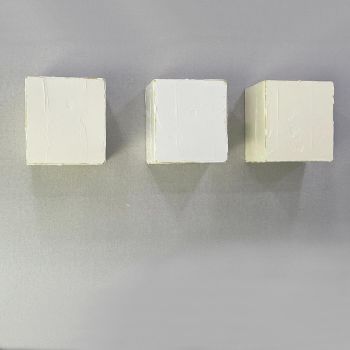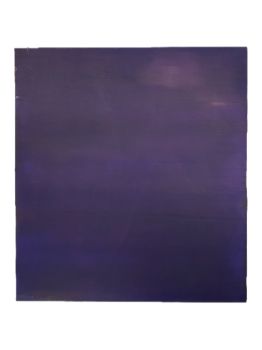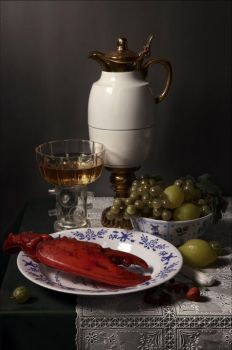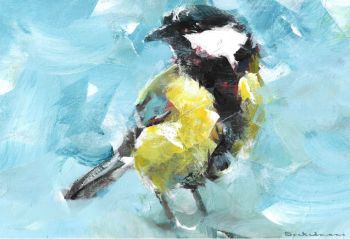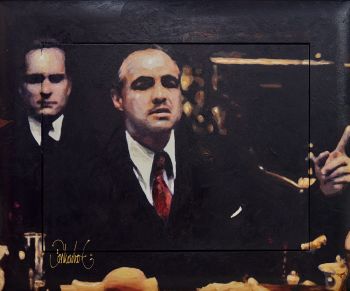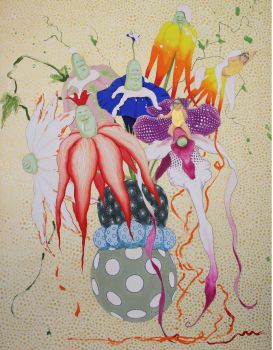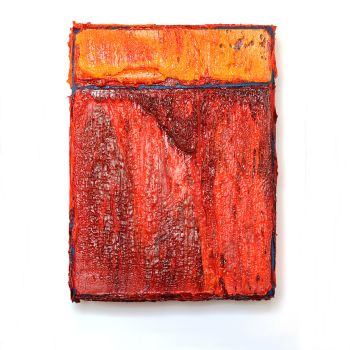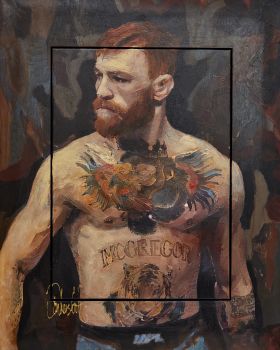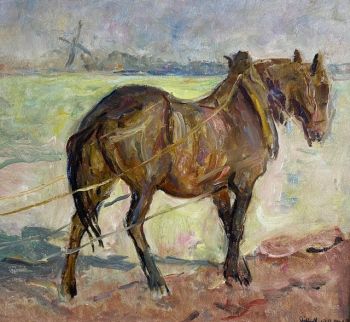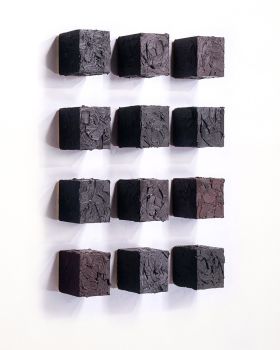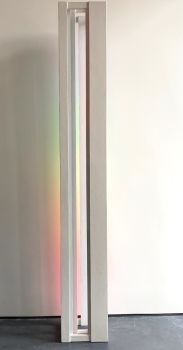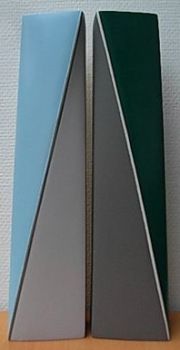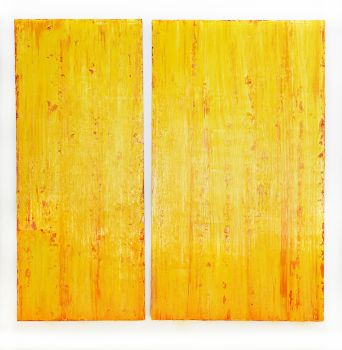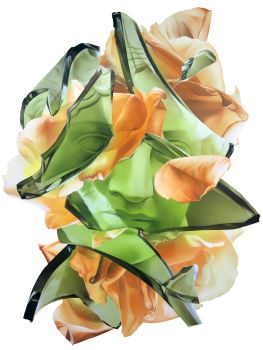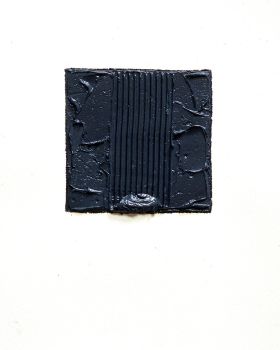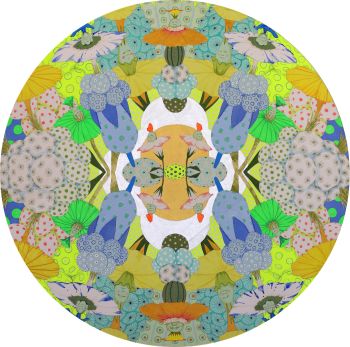American Mahogany Torchère 1770
Artista Sconosciuto
LegnaMogano
85 cm, ø 24 cm
Attualmente non disponibile tramite Gallerease
- A proposito di opere d'arteA high torchère on a tripod of which the legs end in claws. The legs are carved with acanthus motives. The shape of the table top is commonly known as ‘pie-crust’ shape.
This torchère is manufactured near Newport (Rhode Island) or possibly somewhat more to the south of Massachusetts. Typical for the American Chippendale style (app. 1755-1780) are the explicit regional characteristics of the furniture.
In Newport mainly Cuban Mahogany was used for the fabrication of furniture, that was delicately carved or torsioned. The decoration of the knees with Acanthus or Palmette motives is fairly common. Most distinguished feature of the furniture originating from Newport and its direct vicinity is the shape of the ball under the claws that decorate the ends of the legs. These balls or seldom round but mostly oval shaped and more or less flatened. The shape of the torsioned node in the stem however resembles the style commonly seen in Massachusetts in this period and is seldom seen in Newport.
Torchères have been in use since the early 17th century and were originally designed to support candlesticks. The traditional shape, with its long stem and tripod, that did not change through the years, made regional variances in decoration and shape – at least in North America – very much in demand. - A proposito di opere artista
Può succedere che un artista o un creatore sia sconosciuto.
Alcune opere non sono determinate da chi sono state realizzate o sono state realizzate da (un gruppo di) artigiani. Esempi sono statue dell'antichità, mobili, specchi o firme non chiare o leggibili ma anche alcune opere non sono affatto firmate.
Inoltre puoi trovare la seguente descrizione:
•"Attribuito a …." A loro avviso probabilmente opera dell'artista, almeno in parte
•“Studio di ….” o “Officina di” A loro avviso un'opera eseguita nello studio o nella bottega dell'artista, eventualmente sotto la sua supervisione
•“Cerchio di…” A loro avviso un'opera del periodo dell'artista che mostra la sua influenza, strettamente legata all'artista ma non necessariamente al suo allievo
•"Stile di..." o "Seguace di..." A loro avviso un'opera eseguita nello stile dell'artista ma non necessariamente da un allievo; può essere contemporaneo o quasi contemporaneo
•“Modalità di…” A loro avviso un'opera nello stile dell'artista ma di epoca successiva
•"Dopo …." A loro avviso una copia (di qualsiasi data) di un'opera dell'artista
•“Firmato…”, “Datato…” o “Iscritto” A loro avviso l'opera è stata firmata/datata/inscritta dall'artista. L'aggiunta di un punto interrogativo indica un elemento di dubbio
•"Con firma....", "Con data...", "Con iscrizione..." o “Riporta firma/data/iscrizione” a loro avviso la firma/data/iscrizione è stata aggiunta da qualcuno diverso dall'artista
Artwork details
Related artworks
Artista Sconosciuto
UN RARO GRANDE TELESCOPIO GIAPPONESE IN PELLE LACCATA1750 - 1800
Prezzo su richiestaZebregs & Röell - Fine Art - Antiques
1 - 4 / 12- 1 - 4 / 24
Artista Sconosciuto
The Stamford Raffles Secretaires.1800 - 1813
Prezzo su richiestaZebregs & Röell - Fine Art - Antiques
Artista Sconosciuto
UN PICCOLO NETSUKE IN AVORIO DI UN OLANDESE CON UN TAMBURO1750 - 1800
Prezzo su richiestaZebregs & Röell - Fine Art - Antiques
Artista Sconosciuto
Japanese transition-style lacquer coffer 1640 - 1650
Prezzo su richiestaZebregs & Röell - Fine Art - Antiques
Artista Sconosciuto
A rare Japanese export lacquer medical instrument box1650 - 1700
Prezzo su richiestaZebregs & Röell - Fine Art - Antiques
Artista Sconosciuto
COPPIA DI TORCHÈRE O PORTACANDELE IN TEAK INDONESI LACCATI E DORATI18th century
Prezzo su richiestaZebregs & Röell - Fine Art - Antiques
1 - 4 / 24- 1 - 4 / 24

